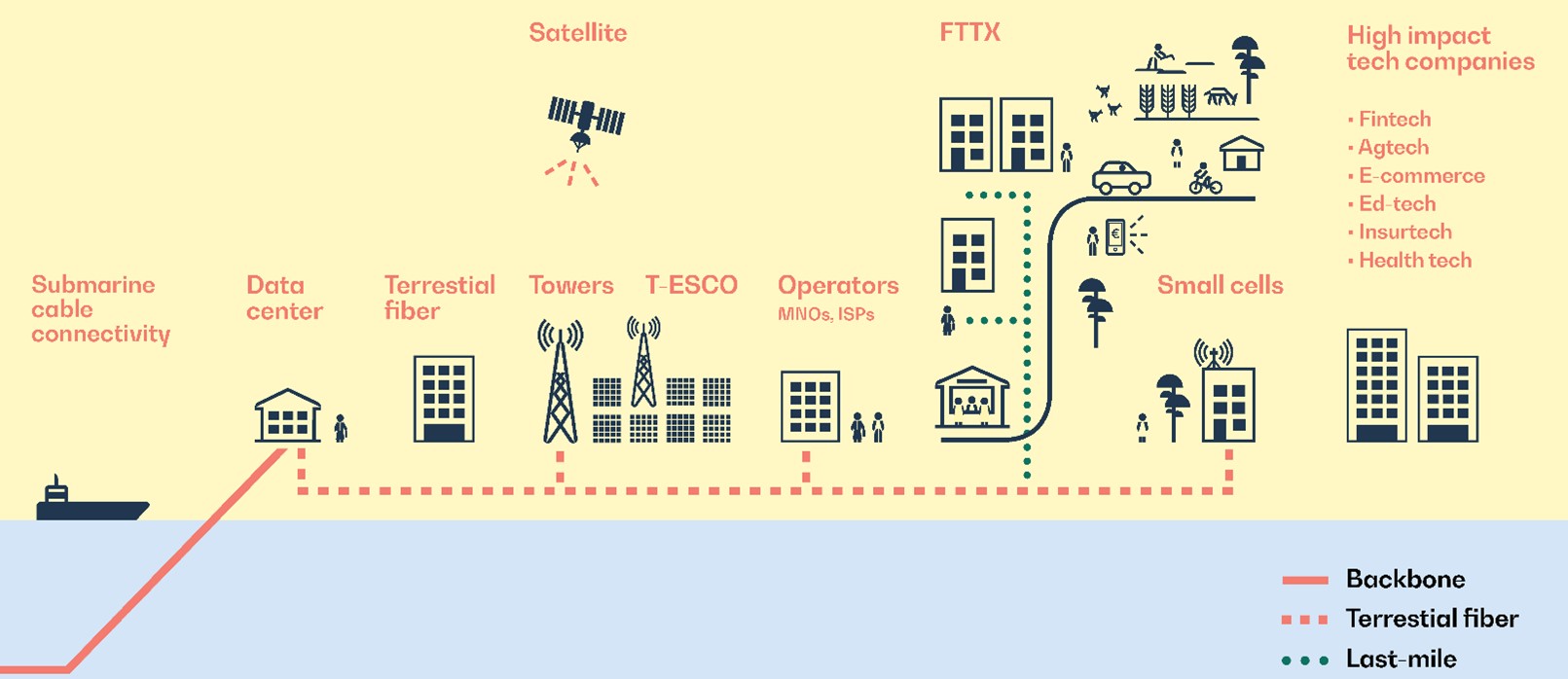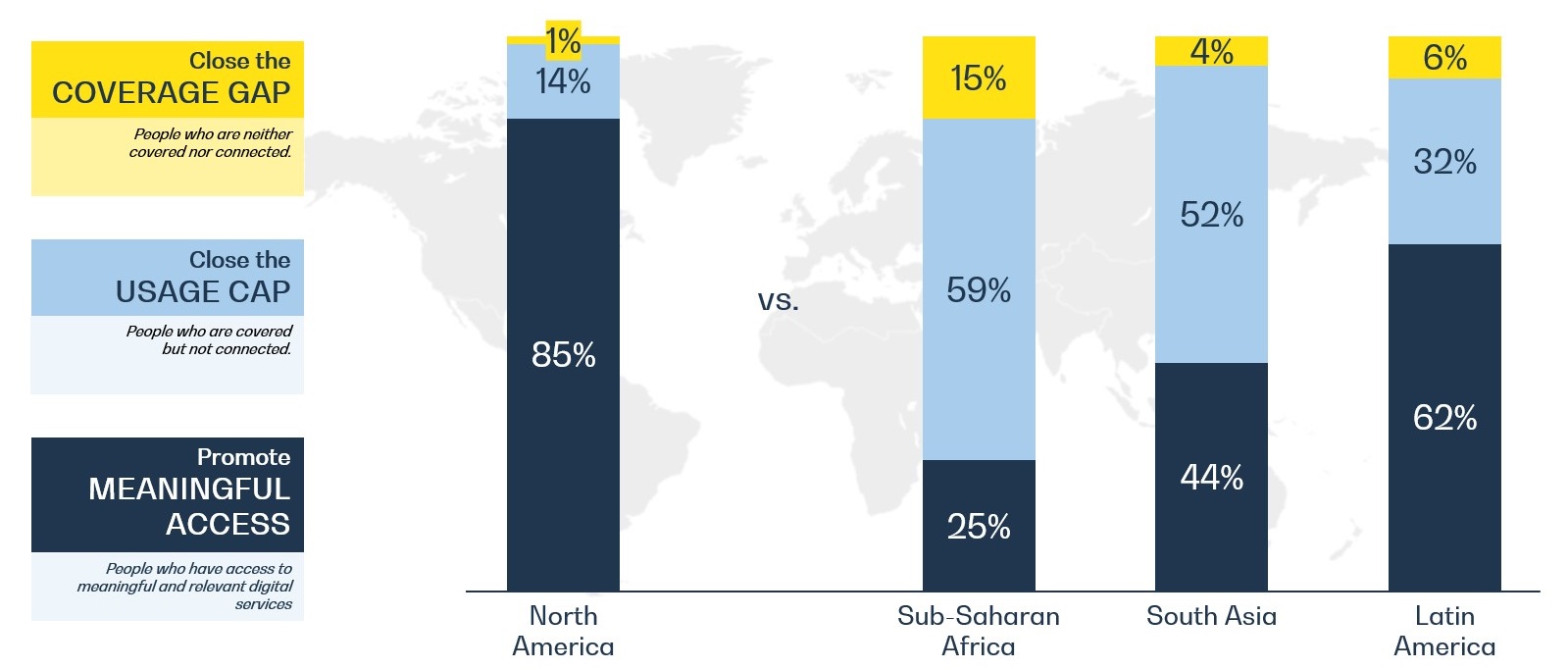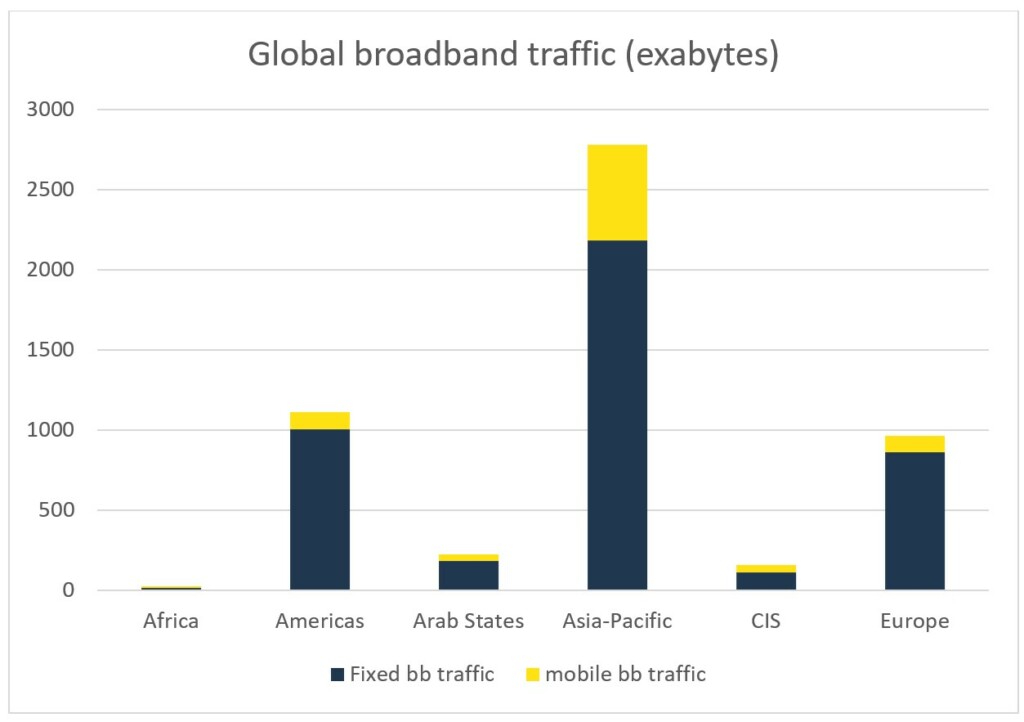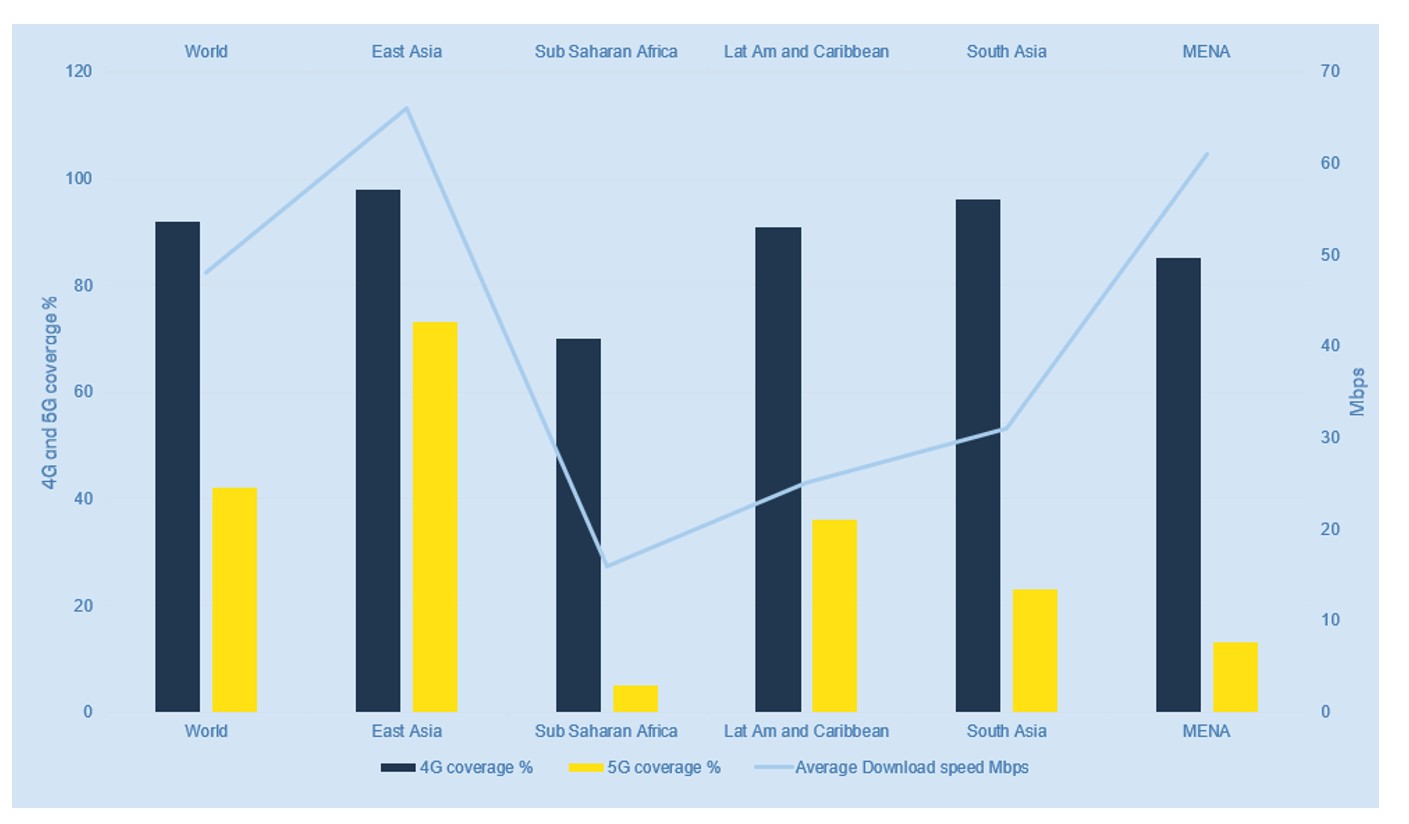December 12, 2024
The risk of not investing: Failing to provide digital access poses risks to achieving SDGs
The risk of not investing. That is how one could summarise the linkage between digital access and achieving the UN Sustainable Development Goals (SDGs).
The role of internet connectivity for sustainable and inclusive development is highlighted in several SDGs. Over two thirds of the SDG targets can be directly enhanced by digital technologies. And failing to fully harness digital for development threatens to increase existing divides.

Finnfund approach on investing in digital infrastructure and solutions.
160 million new users of mobile internet – in one year!
Today, more than two thirds of the global population are online, and the number of people using the internet increases rapidly every year. In 2023, around 160 million people started using mobile internet, and 90% of them came from low- and middle-income (LMIC) countries! It has become obvious that access to internet is no longer a luxury product available for few privileged rich. Rather, internet access has become the means for all people to work, to learn, to interact and communicate with each other. A decent internet connection is a 21st century human right.
However, despite increased access, the potential of connectivity for socio-economic development remains largely untapped. International Telecommunications Union (ITU), the specialised UN agency for ICT, argues that to maximise impact of connectivity on societies and on the economy, digital connectivity must be universal and meaningful. And for this to happen, three gaps or divides need to be closed: coverage gap, usage gap, and quality gap.
Millions of people still living in areas without access
Coverage gap refers to people who live in an area not covered by a mobile broadband network. Their number and share of population have declined rapidly from 1.4 billion in 2015 to 350 million in 2023, representing now 4% of the global population.
There are, however, 30 countries, mostly in Sub Saharan Africa, where coverage gap is still over 10% of the population. The remaining, uncovered regions are typically rural, poor, and sparsely populated making it very challenging and expensive to reach them. So, while closing the remaining coverage gap is important, it cannot be the only priority for an impact investor.
Internet available but not in use – why?
A far more significant challenge is the usage gap that refers to the 3.1 billion people who live within the footprint of a mobile broadband network but do not use mobile internet services. They represent 39% of the global population. Over half of the non-users live in South Asia (970 million) and in Sub Saharan Africa (710 million).
At country level, by far the biggest usage gap is found in India, where 670 million people do not use the internet despite living in an area where network is available. China, Pakistan, Indonesia, Nigeria, Bangladesh and Ethiopia all have a usage gap of over 100 million people.
The main reason for the usage gap is affordability, especially cost of the device. But the connection cost can also be prohibitive. The Broadband Commission has set 2% of monthly GNI per person as the affordability target for the cost of connection. In the least developed countries, a meaningful connection such as high consumption mobile connections or 5GB fixed broadband connections cost over 10% of monthly income.
Usage gap is even more severe for women in South Asia and Sub-Saharan Africa who are 30% less likely to use internet compared to men. Closing the usage and gender gaps is paramount to bring about the aspired socio-economic development. Broadband internet is key for the productivity of both people and companies. GSMA estimates that closing the usage and gender gaps would add USD 4.8 trillion in global GDP between 2023 and 2030. Over half (USD2.65 trillion) is estimated to occur in South Asia and Africa.

Graph 1: Percentage of connected and not connected people by geographies. Finnfund Digital Access Impact Fund benefits from catch-up potential in developing and emerging markets. Source: GSMA (2024) The State of Mobile Internet Connectivity Report 2023
It’s not only about the cost
Cost is not the only limiting factor. One billion (1/3) of the non-users actually own a device that would allow internet connection. For these people, the main reasons for non-connectivity include unawareness of internet and lack of digital skills, safety and security concerns, and perceived relevance of content, products and services available in the internet.
The Mobile Connectivity Index highlights the importance of locally relevant content encouraging people to adopt and use internet. Over half the world’s websites are in English that only 20% of the people in the world understand. So many are excluded from the use simply because there is no or little content in their own language. When people don’t see personal relevance, they are less likely to explore and use the digital world.
This is why digital solutions is a key priority for Finnfund. Some of the most impactful investments are, and will be, in companies that have revolutionised service delivery through digital applications that are designed to meet local challenges.
And it’s not (only) about entertainment
Those who are connected, like to use internet daily. Also, over half of them would like to use internet more than they currently do. The most common services include, not surprisingly, social media, messaging, video calls and online entertainment. These are used by 90% of internet users.
But internet is not only for keeping in touch and for entertainment. 70% of users read news through internet, 50% use it for educational purposes or learning support, and 40% for government services, online banking, and health services. Internet has become the preferred or best available channel for accessing critical private and public services.
Closing the quality gap
Socio-economic benefits of broadband internet connectivity materialise through data usage. To use data, one needs a connection that is fast, reliable and affordable. There are, however, critical quality gaps that need to be closed in order to bring quality connectivity for everyone and to advance socio economic development.
Despite the rapid growth of mobile broadband subscriptions and availability of 4G and 5G networks, 80% of the internet traffic is through fixed broadband connections (see graph 2) that allow for faster and cheaper data usage.

Graph 2: Global broadband traffic (exabytes) in 2023. Source: ITU
Only 8 million fixed connections in Africa
In addition to prevalence of fixed connections in data usage, the graph 2 also reveals is that there is very little data usage in Africa! Global average data usage through mobile connections is 119GB and 2915GB through fixed connections.
In Africa average data usage in mobile connections is 23GB and 1558GB in fixed connections. However, as there are only 8 million fixed connections in the whole Africa representing less than 1% of the population, half of the traffic in the continent is through slower and more limited mobile connections.
5G has emerged as the fastest growing mobile technology ever and it is expected to become the dominant global technology by the end of the decade. However, in LMICs the 5G penetration is expected to be only 55% by 2030. 5G is five times faster than 4G and allows significantly improved mobile experience.
In Africa, 5G coverage is only 5% and though 4G covers 70% of the network area, the average download speed at 16Mbs lags seriously behind the global average of 48Mbs.

Graph 3: Mobile 4G and 5G coverage and average mobile download speeds (Mbps). Source: GSMA The State of Mobile Internet Connectivity Report 2024
Why a digital access fund?
ITU has set an objective that by 2030, every person should have a safe and affordable access to the internet that allows a meaningful use of digitally enabled services. Meaningful use requires a high-speed broadband connection with enabling infrastructure, suitable devices, sufficient skills, and ultimately applications to make services available.
This calls for investments in the whole digital value chain from first mile submarine cable to mid-mile data centres to last mile household connections, and finally the applications.
As we are writing this, Finnfund establishing a new fund, that contributes to closing all the above described gaps to make access to the internet universal and meaningful, especially in the emerging markets where the opportunities for improvements are the biggest, and the needs for socio-economic development the greatest.
Stay tuned, more information about the Finnfund Digital Access Impact Fund is coming soon.
Kaisa Alavuotunki
Director, Impact and Sustainability
Juho Uusihakala
Senior Development Impact Adviser
Read more:
Digital infrastructure and solutions – Finnfund
EU and Finnfund launch the Africa Connected Programme to mobilise more than €1 billion for Sub-Saharan Africa’s digital infrastructure – Finnfund
